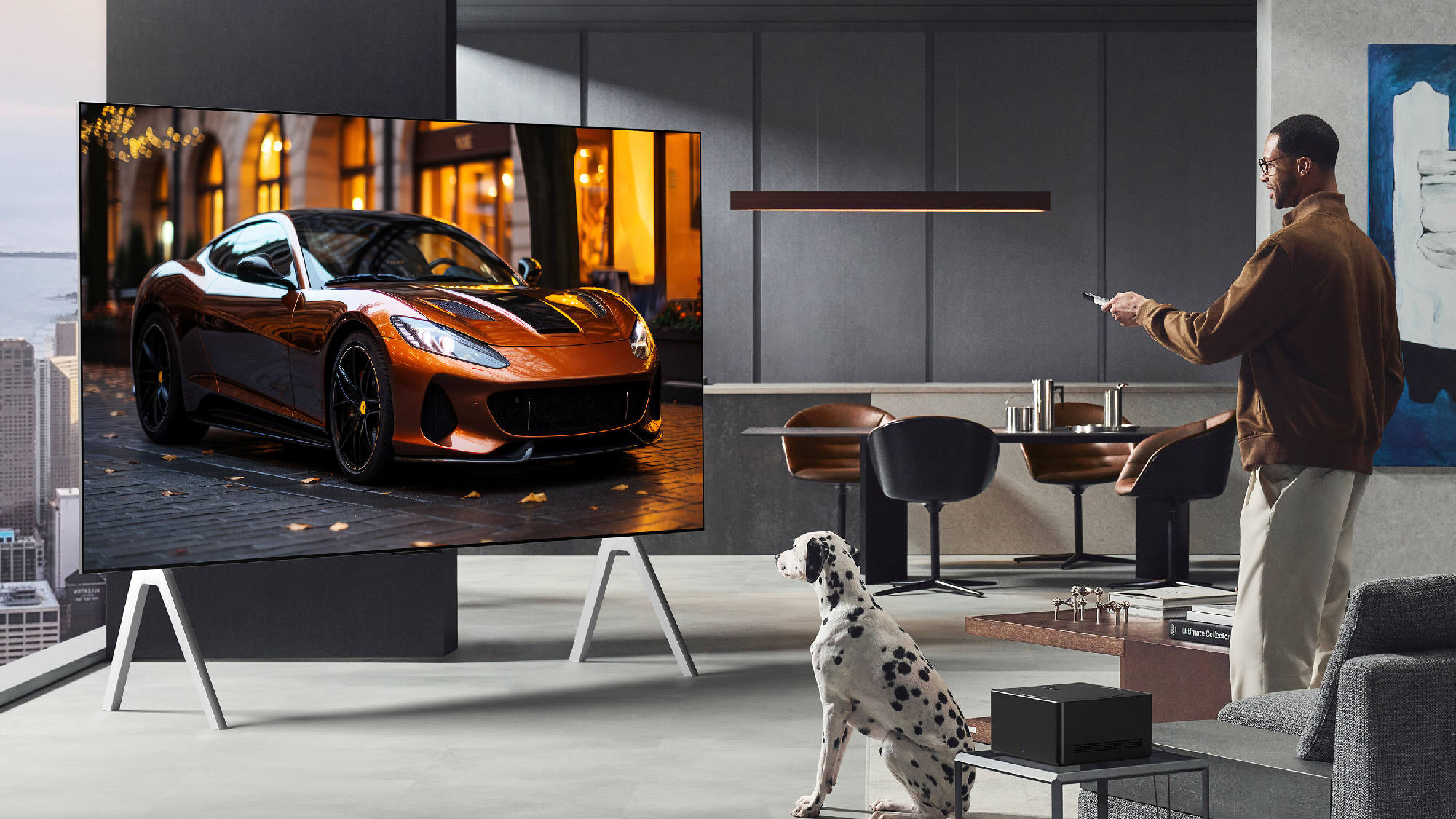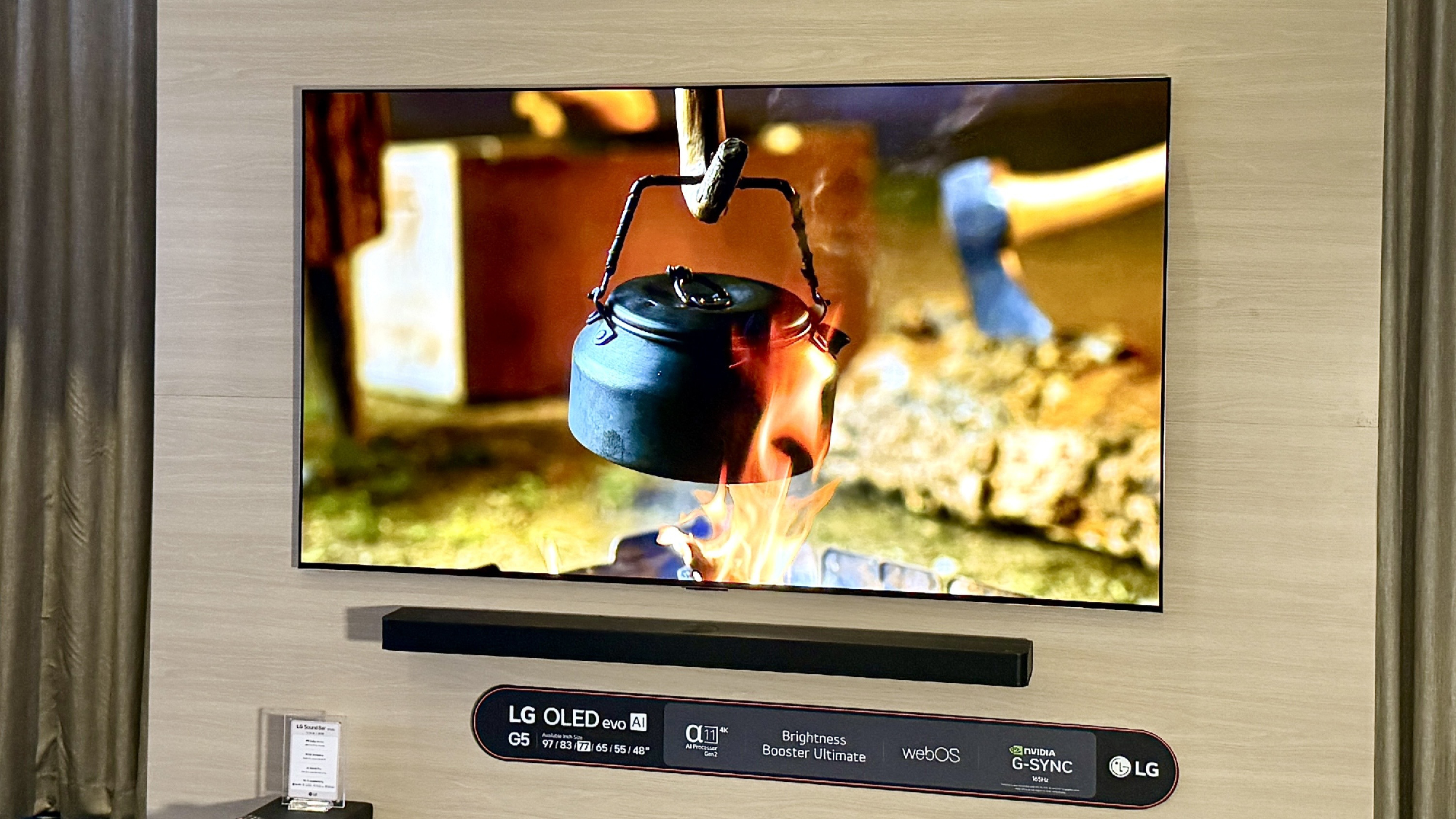
CES 2025 is still in full swing, where exciting new technologies abound. As evidenced by the eight best TVs at CES, there's a lot to get hyped for in 2025 when it comes to OLEDs. But one major panel change on LG's flagship might prove the most enticing.
To everyone's surprise, LG is dropping its MLA (Micro Lens Array) panel on the G5 and M5 OLED TVs. When I first heard about this, I was a bit dismayed, but LG is putting my worries to bed.
The new four-stack engineering process could be even better than its gen-two MLA designs. LG Display is keeping quiet about the details of the hardware, but LG claims the new G5 delivers 40% higher full-screen brightness over last year's G4.
And LG isn't alone. Panasonic is also leaving MLA behind in favor of the four-stack display, though Panasonic is referring to its take on it as Primary RGB Tandem technology. It's the same technology designed by LG Display, and Panasonic's panels are sourced by LG Display, too. There are even rumors circulating that Sony might end up using it, too.
So what does this all mean for you? Beyond it adding a whole new panel type to refer to in the war between MLA, WOLED, and QD-OLED TVs, it might well prove the pinnacle of premium TV design. Let's dive in, learning specifically what this new panel is and how beneficial it might be for the market.
What even is a four-stack OLED panel?
As the name implies, LG's four-stack engineering leverages multiple OLED emitting layers held within its white-OLED panels (WOLED). Although the word "tandem" is used in Panasonic's branding of the technology, this isn't to be confused with Apple's Tandem OLED, which, though similar, is a different structure of RGB layers (side by side). Stacking OLED layers isn't a new concept, as even LG's 2024 TV lineup featured a three-stack structure, with its flagships aided with micro lenses (MLA).
Instead of using MLA panels, which are notoriously expensive to produce, LG is adding another OLED layer to its panel structure, thus bringing it to four, and also tossing in more deuterium hosts, according to Ross Young, CEO of Display Supply Chain Consultants. Not to turn this into a full-blown chemistry lesson, but in simplest terms, deuterium is an organic material that has been found to make OLED TVs much brighter.
According to The Elec, LG Display has stacked, from the bottom, blue, green, blue and red (B-G-B-R) layers as opposed to the three-stack WOLED's blue, green/yellow green/red, and blue (B-GYG-R) layers. This could not only lead to better brightness, but also a far wider range in colors and potentially even better color accuracy on these newer OLED sets.
The four-stack structure also sounds exactly like what Panasonic is using on its new flagship OLED in the Z95B, and FlatpanelsHD purportedly confirmed this.
Panasonic is also leveraging a new cooling system it built in-house that could be revolutionary in mitigating OLED burn-in while still amplifying performance. Called ThermalFlow, the new cooling system takes inspiration from the likes of "aerodynamic techniques seen in race car design." Panasonic's updated HCX Pro AI MK II processor is what runs the entire system, which Panasonic claims helps the OLED TV maintain impeccable brightness. It's unclear if this cooling solution will be found on LG TVs, but it is a novel concept that also could be game-changing for the OLED market.
What it all means for our favorite OLED TVs

These changes allow for brighter panels than MLA-bearing ones. We don't have any specific numbers just yet, but LG itself is claiming to hit over 2,000 nits in a 10% window, which would be bonkers for an OLED screen. The closest any OLED has come to this spec would be the Samsung S95D OLED, which we tested at 1,777 nits in standard content.
According to Michael Desjardin, managing editor of TVs and on the show floor, the LG G5 OLED TV appears to share a similar level of peak brightness with its predecessor. We'll have to wait until it's in our hands for official testing, but last year's LG G4 peaked at 1,487 nits in standard content and 1,617 nits in HDR. Thus, 2,000 nits isn't too hard a metric to hit if the claims are to be believed, but we'll just have to wait and see.
In terms of color accuracy performance, Michael also noted in his hands on with the LG G5 OLED that subtle changes are there, highlighting that "the reds, greens and blues were leaping off the G5 in a way that called to mind the G4." His experience with LG's new OLED can best be summed up in his own words: "It was hard to tear myself away from the LG G5."
I've often come across LG OLEDs that exhibit a subtle pink- or green-colored tint whenever bright, white-colored content is viewed from an off-axis viewing position. This does not seem to be the case with the G5 after initial viewing.
Michael Desjardin
So brightness and color upgrades are seemingly there, but LG is claiming its new four-stack OLED structure is also more energy efficient. LG says the 65-inch LG G5 OLED is rated 164W in energy consumption, which is quite the improvement over last year's 65-inch G4, which came in at 209W.
We won't know for certain just how far LG's panel upgrades will go until we get them in for testing, but they could be revolutionary if the brightness metrics measure up to LG's claims. But LG isn't the only one inviting new upgrades to its panel technology, as Samsung is going with a five-stack panel structure for its QD-OLEDs in 2025.
Which technology is superior? That's a question we'll inevitably find out later in the year when more information about these OLED TVs comes to light.







